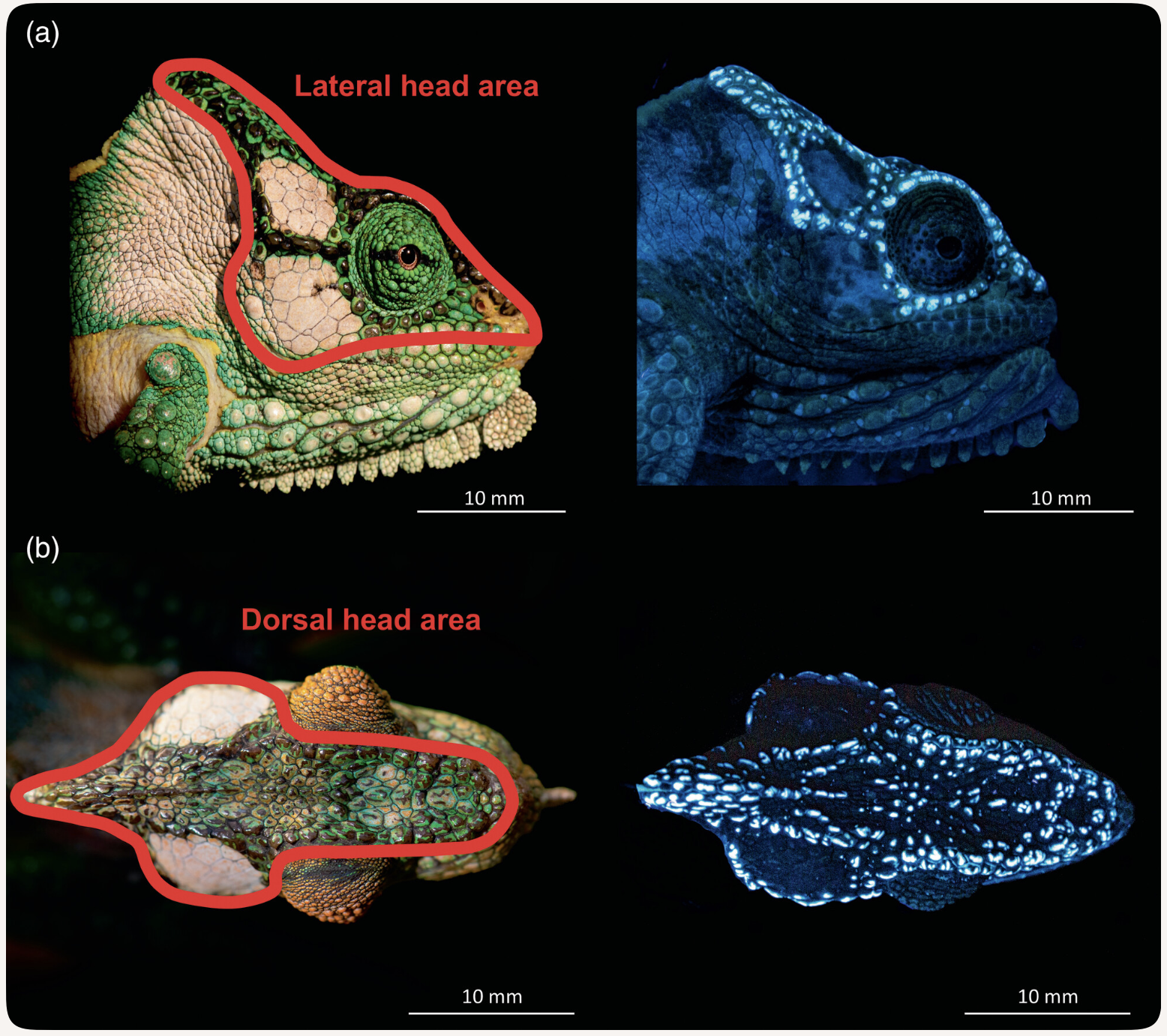Glow for Show? Why Bigger Chameleons Shine Brighter in UV

In a study that flips the script on how we interpret animal signaling, Barends et al. (2025) reveal that body size—not habitat or sex—is the strongest predictor of ultraviolet (UV) fluorescence in African dwarf chameleons (Bradypodion). Published in the Journal of Zoology, this research challenges long-held assumptions about the role of biofluorescence in sexual and ecological communication.
Chameleons are known for their flamboyant ornamentation and cryptic behaviors, but recent discoveries have shown that many species also possess bone-based fluorescent tubercles (FTs)—tiny structures embedded in cranial ornaments that glow under UV light. These FTs were thought to serve as visual signals in dense forest habitats or as sexually selected traits in males. But this study says: not so fast.
The team examined five Bradypodion species across diverse habitats—from Afrotemperate forests to open shrublands—and compared FT counts across sexes, environments, and body sizes. Their findings? Larger individuals consistently had more FTs, regardless of whether they were male or female, or whether they lived in forested or open habitats. Even urban versus natural populations showed no significant difference once body size was accounted for.
This suggests that UV fluorescence in these chameleons is not primarily shaped by sexual selection or habitat conduciveness, but rather scales with overall body size. In other words, the glow isn't necessarily a signal—it may be a byproduct of growth or cranial development.
The implications are striking. If biofluorescence isn't a targeted signaling trait, then its evolutionary role may be more passive than previously thought. It also raises questions about how visual ecology and structural biology intersect in reptiles, and whether similar patterns exist in other taxa.
For those dazzled by glowing lizards, this study reminds us: sometimes, size matters more than style.
Original citation:
Barends, J. M., Stanton-Jones, W. K., Alexander, G. J., & Tolley, K. A. (2025). Body size, not habitat or sex, best explains the extent of ultraviolet fluorescence in African dwarf chameleons (Bradypodion). Journal of Zoology, 101(3), 1227–1247. https://doi.org/10.1111/jzo.70032